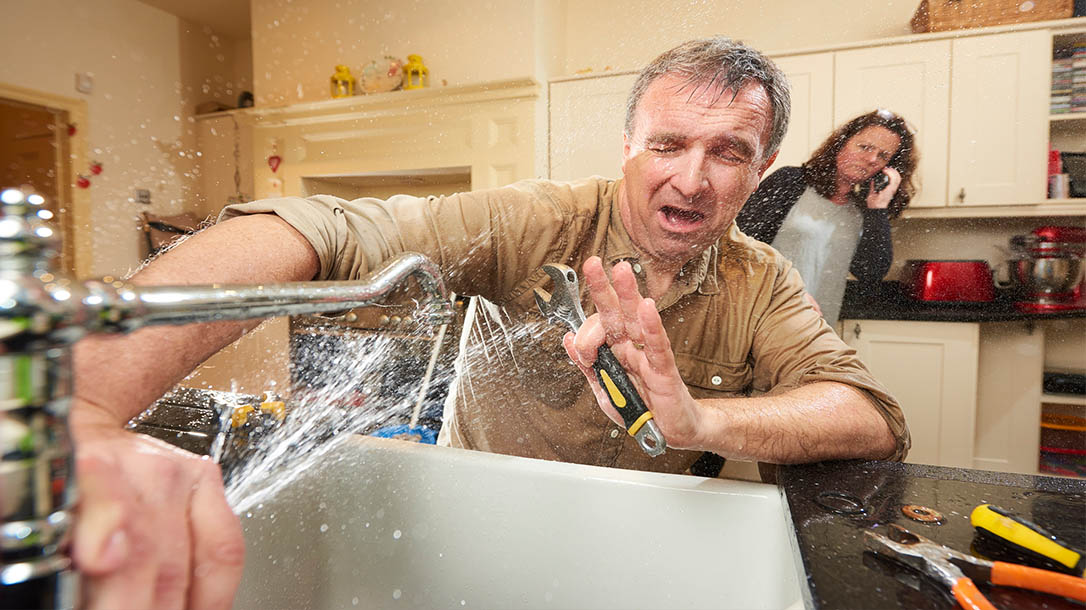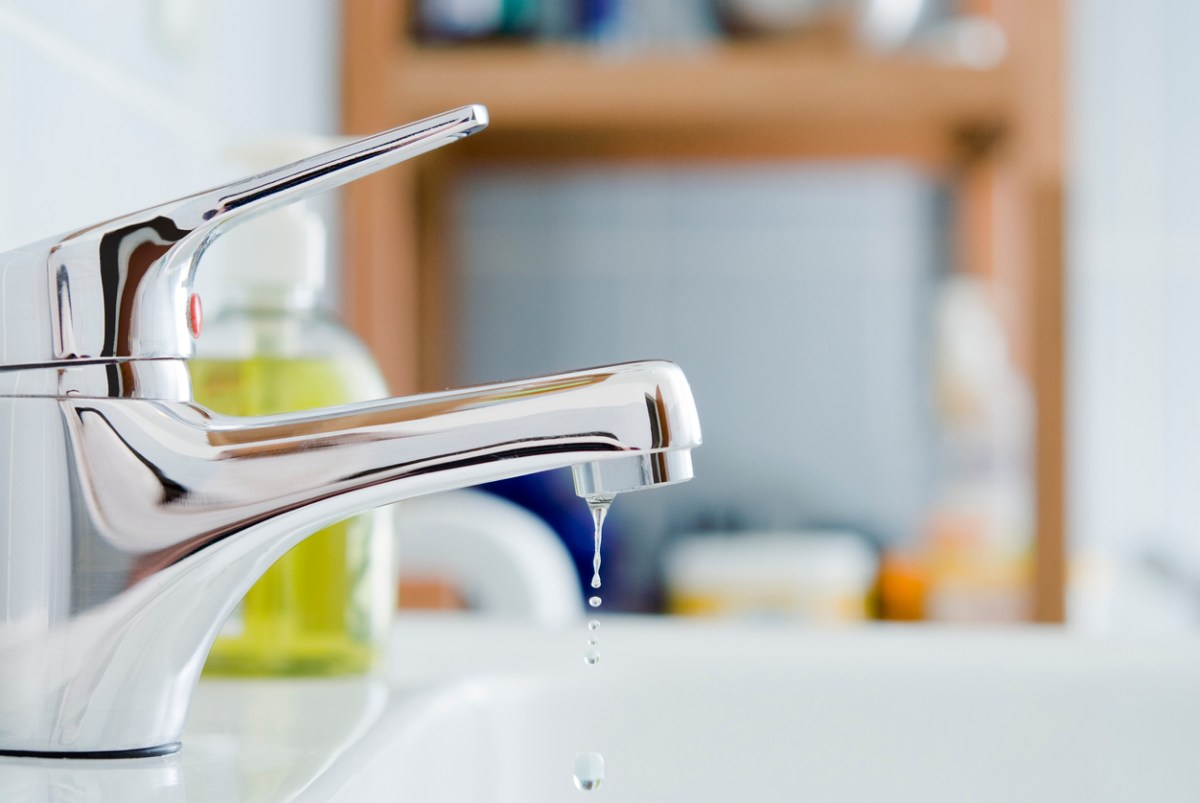They are making several good observations about 4 Common Reasons for a Leaky Faucet in general in the article on the next paragraphs.

Leaking taps might appear like a small hassle, yet their impact exceeds simply the annoyance of the noise. From drainage to sustaining unnecessary financial prices and health risks, neglecting a trickling faucet can result in numerous effects. In this write-up, we'll delve into why it's important to resolve this usual household problem immediately and properly.
Wastage of Water
Environmental Effect
Leaking faucets contribute substantially to water waste. According to the Epa (EPA), a solitary tap trickling at one drip per secondly can waste more than 3,000 gallons of water per year. This not only strains water sources yet also affects ecosystems and wildlife dependent on them.
Financial Costs
Increased Water Bills
Beyond the environmental impact, trickling taps can pump up water expenses significantly. The collected waste gradually equates into higher utility expenditures, which can have been prevented with timely repairs.
Potential Residential Or Commercial Property Damage
Moreover, long term trickling can cause damage to fixtures and surface areas bordering the faucet. Water buildup can trigger staining, corrosion, and also architectural problems if left unattended, resulting in added repair service expenses.
Wellness Worries
Mold and Mold Development
The continuous presence of dampness from a leaking faucet develops a suitable atmosphere for mold and mildew and mildew development. These fungi not just jeopardize indoor air top quality however also present health threats, especially for individuals with breathing problems or allergies.
Waterborne Conditions
Stagnant water in trickling faucets can come to be a breeding place for bacteria and various other pathogens, boosting the risk of waterborne conditions. Pollutants such as Legionella germs thrive in stationary water, potentially causing severe health problems when ingested or inhaled.
Do it yourself vs. Professional Fixing
Advantages and disadvantages of Do It Yourself Repair Work
While some might try to repair a trickling faucet themselves, DIY fixings come with their very own collection of challenges. Without appropriate expertise and tools, DIY attempts can worsen the concern or result in insufficient repairs, extending the issue.
Advantages of Hiring an Expert Plumber
Employing a specialist plumber ensures that the underlying cause of the leaking faucet is resolved effectively. Plumbings have the experience and equipment to identify and repair faucet problems successfully, saving time and lessening the threat of more damages.
Step-by-Step Overview to Fixing a Dripping Faucet
Tools Required
Before attempting to fix a dripping tap, collect the necessary devices, consisting of a flexible wrench, screwdrivers, substitute components (such as washing machines or cartridges), and plumber's tape.
Typical Tap Issues and Their Solutions
Recognize the kind of faucet and the specific issue causing the drip. Usual troubles consist of damaged washers, rusty shutoff seats, or malfunctioning O-rings. Describe maker directions or online tutorials for detailed advice on fixings.
Safety nets
Routine Maintenance Tips
To prevent dripping taps, do routine maintenance such as cleaning aerators, evaluating for leaks, and replacing damaged parts quickly. Additionally, take into consideration mounting water-saving gadgets or upgrading to more reliable fixtures.
Significance of Prompt Repairs
Resolving leaking faucets as quickly as they're observed avoids further water wastefulness and prospective damages, eventually saving both water and cash in the long run.
Influence On Building Value
Perception of Well-Maintained Building
Preserving a residential or commercial property in good condition, consisting of dealing with upkeep problems like trickling faucets, boosts its perceived worth and desirability among possible purchasers or tenants.
Influence on Resale Worth
Residences with properly maintained plumbing fixtures, consisting of faucets, command higher resale values in the property market. Dealing with trickling faucets can contribute to a favorable impression throughout property assessments and arrangements.
Environmental Obligation
Private Payment to Conservation
Taking obligation for dealing with dripping faucets lines up with more comprehensive efforts toward water preservation and ecological sustainability. Every individual's activities collectively make a considerable influence on maintaining precious resources.
Sustainable Living Practices
By focusing on punctual repairs and embracing water-saving routines, people add to sustainable living methods that benefit both existing and future generations.
Final thought
Resolving a trickling faucet exceeds plain comfort; it's a necessary action toward saving water, reducing financial expenses, and protecting health and wellness and property. Whether through DIY repair work or professional support, acting to take care of leaking faucets is a small yet impactful way to promote liable stewardship of sources and add to a much healthier, extra lasting future.
Most Common Reasons for a Leaky Faucet and How to Stop the Drip
Whether it’s your kitchen faucet leaking or a bathroom faucet leaking, one leaky faucet can waste anywhere from three to 30 gallons of water every single day. If the constant drip-drip-drip doesn’t get your attention, your water bill will. The good news is that, by following a few simple steps, chances are pretty good you can fix the problem yourself.
Why is it dripping?
Before you start taking things apart, let’s break down some of the most common causes of a leaky faucet.
Bad O-ring.
A cartridge is a valve that controls the flow of water into the faucet spout. On cartridge faucets there’s an O-ring—the little disc attached to the stem screw that holds the faucet handle in place. If it’s loose or worn-out, it can cause your sink handle to leak. Of course, the cartridge itself could be worn out. If that’s the case, make sure you replace it with the exact same kind.
Corroded valve seat.
The valve seat connects the faucet and the spout. If the leak seems to be coming from the spout, it might be because a buildup of water sediment has corroded the valve seat.
Worn-out washers or seals.
A leaky spout could be caused by a bad washer that rests against the valve seat. It’s just a matter of time before friction takes its toll. It could also be the wrong size washer or one that’s been installed incorrectly. Water sediments can also corrode inlet and outlet seals.
Water pressure.
If the faucet only drips now and then, or when you turn the handles a certain way, you should probably check your home’s water pressure.
Loose or broken parts.
The adjusting ring and packing nuts in the stream screw can become loose over time, causing your sink handle to leak. Try tightening or replacing the packing nut. If the leak is coming from the pipes underneath the sink, you probably have a broken pipe or fitting. If that’s the case, you should definitely call a plumber.
Know your faucet.
Faucets come in a variety of types. Each one has its own assembly—and its own possible causes of leaks. Learning about the four most common kinds of faucets will help you know how to take them apart and make any repairs.
How to stop a leaky faucet
Fixing that leaky faucet doesn’t have to take a lot of time, money, or expertise. It’s usually a simple matter of replacing a worn-out washer or gasket, a loose O ring, or another part. Chances are really good you can do this yourself if you follow these simple steps.
Shut off the water.
Before you tackle the faucet, cut off the water supply to the sink. There should be one valve for hot and one for cold. Hand-turn them clockwise with your hands till they close. If there are no valves under the sink, head to the basement and shut off the main water supply to the house. Then turn on the faucet until it empties out the water that’s still in the line and you’re ready to start. It’s a good idea to cover the sink drain with a plug or a rag so you don’t lose any small pieces and parts while you’re working.

I hope you liked our post about Why Are My Faucets Dripping (And Can I Fix It Myself)?. Thanks a ton for taking the time to read our article. In case you enjoyed our article kindly do not forget to share it. Many thanks for going through it.